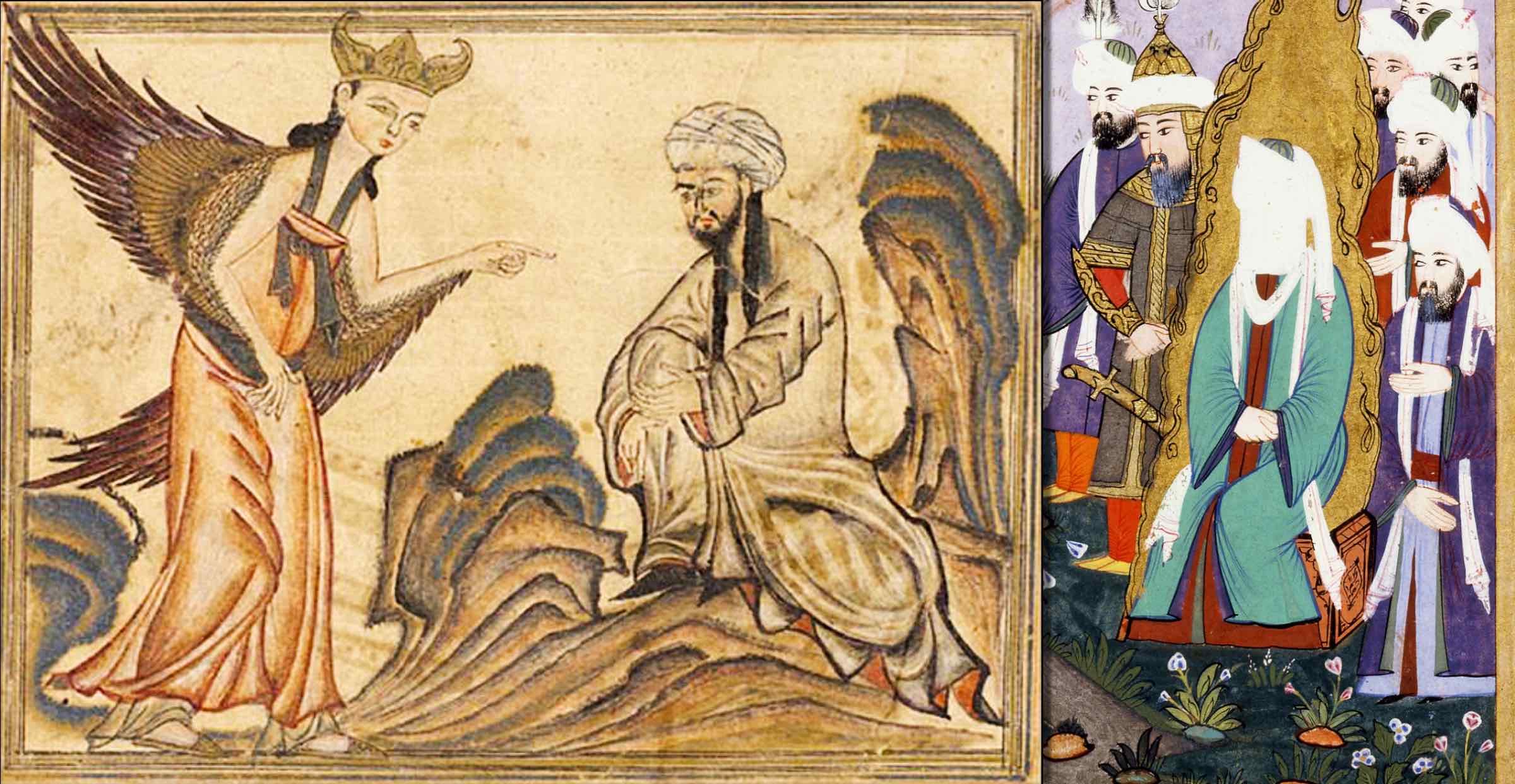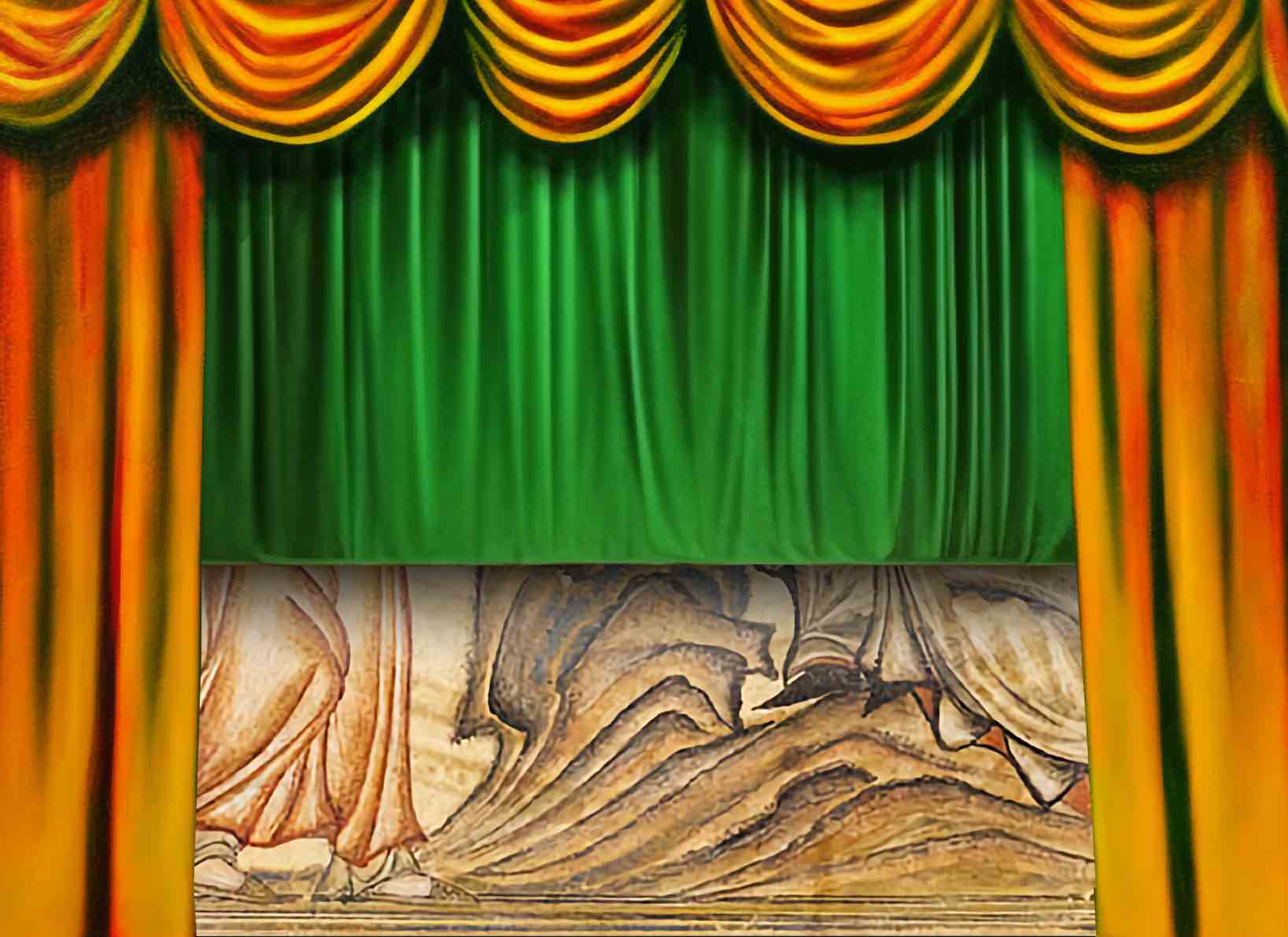Teachers can be exciting, frustrating, boring, and many other ‘ings’, as all students know. So can teaching, as all teachers know. Teachers are also chronically underpaid and overworked. In the West, we don’t often think of them as heroes. And they don’t often face a violent death for their work, as they do in Afghanistan. Yet even in the US, teaching is a profession that calls for courage.
Note! This posting contains reproductions of beautiful Islamic paintings of the Prophet Muhammed.
It can take courage to teach about air pressure and electromagnetism in California, as science teacher Greg Schiller discovered when he volunteered to help kids with their entries for a science contest. He was suspended when a school bureaucrat noticed that one of the kids’ projects was a tiny version of the marshmallow cannon President Obama praised at a White House science fair, and another used an electromagnetic coil to launch an object several … feet. They couldn’t hurt a fly, but in principle, you could use air pressure or electromagnetism to make a weapon. Hence, school bureaucrats reasoned, anyone caught teaching such arcane stuff should be banished.
It takes courage to teach in states like Oklahoma, where a Republican State Senator Rob Standrige introduced a bill that would fine a teacher $10,000 for teaching a lesson deemed by any parent or student to disagree with their religion, and for a second offence, bar the teacher from teaching.
But teaching art history ‘by the book’ — shouldn’t that be safe enough? Not at Hamline University in Minnesota. There, art history lecturer Dr. Erika López Prater was dismissed for showing two beautiful, reverential, and historically important depictions of the Prophet Muhammed receiving the Quranic revelations from the angel Gabriel. The first was a 14th century masterpiece from an illustrated history of the world by the Persian statesman and scholar Rashid al-Din. It shows Muhammed with his face unveiled. The second masterpiece was from a 16th century Ottoman biography of the prophet. In that one, Muhammed is shown veiled and surrounded by a flaming nimbus.
According to Islamic scholars and art historians, 14th century Muslim artists typically depicted the prophet’s facial features, whereas by the 16h century, artists more often veiled them. To any art history teacher — and to many Islamic scholars — these brilliant examples from the canon of classical Islamic art are perfect material for showing how conceptualization of the Prophet changed over time. There’s even a Latin name for this standard way to present comparative material: a ‘comparandum’.
Below are two figurative representations of Muhammed, side by side. The painting on the left is one of those that Dr. López Prater used in her lesson.

Comparandum: Illustration by Rashid al-Din Hamadani, Tabriz, Persia, 1307; Fragment of Ali beheading Nadr ibn al-Harith in the presence of Muhammad and his companions. From the Siyer-i Nebi. Image source: Wikipedia
Dr. López Prater’s online course syllabus included historically significant depictions of several divine figures, including the Buddha, Christ, and Muhammed. Of course, Dr. Prater was aware that many modern Muslims (though by no means all) consider it inappropriate to create or look at a figural depiction of Muhammed. This tradition stems both from a sense of reverence (the Prophet is too beautiful to look upon) from the Muslim prohibition against worship of idols. Dr. Prater was undoubtedly aware that Islamist terrorists murdered a dozen people in France for publishing caricatures of the prophet, and beheaded a teacher for showing a cartoon depiction to a class on freedom of expression (the same depiction is shown in Wikipedia).
So, it would have taken some courage to teach that course’s syllabus. Her sensitivity was why she warned students not once but twice, verbally and in writing, about the content of her upcoming lesson, and invited anyone who would find it uncomfortable to opt out. A Muslim student stayed anyway, then immediately complained. Dr. López Prater duly asked her supervisor for advice, and was told she had done everything correctly.
A ’teachable moment’, surely. The student who complained might simply be ignorant of the thousand year Muslim tradition of creating figurative depictions of Muhammed that continues in some Muslim communities to this day. The purpose of teaching is to banish ignorance with the light of knowledge. The student’s complaint created an opportunity to further explore diversity within the faith, to discuss important aspects of Islamic teaching such as whether there was intent to do harm, and how to resolve conflicts.
But not for Hamline University administration. Worried about being perceived as insufficiently sensitive or ‘woke’, and probably also about funding, they responded with a knee-jerk denunciation of Dr. López Prater’s teaching as “hate speech” and “undeniably inconsiderate, disrespectful and Islamophobic”, and got rid of her. Not surprisingly, the University’s denunciation has earned Dr. López Prater threats from the sort of woke trolls who don’t bother to inform themselves about whatever issue sets them off.
This reaction seems to have astonished the University’s own faculty. The faculty Chair of the Department of Religion responded with a thoughtful defense of Dr. López Prater in a letter to the University newspaper (The Oracle), but the newspaper quickly took it down. A faculty petition asking for an investigation got more than 2800 signatures. The majority of the faculty have since asked University President Fayneese Miller to resign.
The kerfuffle has escalated into exactly what Hamline was hoping to avoid: a sensational debacle of national – even international – reach. PEN America called it an “egregious violation of academic freedom.” Scholars of Islamic art across the country rallied to Dr. López Prater’s side. So has the Academic Freedom Alliance and the Foundation of Individual Rights and Expression and the Chronicle of Higher Education and the College of Art and the Middle East Studies Association. So did the Muslim Public Affairs Council and the national office of The Council on American-Islamic Relations (CAIR).
The University doubled down, inviting a non-academic Muslim speaker who compared showing images of Muhammed to teaching pedophilia or to teaching that Hitler was good, and made ominous references to killings of others who disrespected the Prophet. Hamline’s president co-signed a defensive email saying that “respect for the observant Muslim students … should have superseded academic freedom.”
What of the courageous educator at the epicenter of the controversy? Fortunately, Dr. López Prater has landed a teaching gig at another University. I hope she will not be afraid to continue to show reverential paintings of Muhammed in her mission to educate and inspire.
Dr. Erika López Prater speaks about the controversy in an online panel discussion hosted by Dr. Muqtadar Khan of the University of Delaware. Here’s a blog page with the panelists and more information.
Dr. López Prater and Dr. Christiane Gruber, a professor of Islamic art at the University of Michigan, participated in a New Lines Magazine podcast on the controversy.
